Rival Ice Cream Maker Instruction Manual: A Comprehensive Guide
Welcome to your comprehensive guide to using your Rival Ice Cream Maker! This manual will provide you with all the information you need to create delicious homemade ice cream, sorbet, and frozen yogurt․ Get ready for a delightful frozen adventure!
Rival Ice Cream Makers have been a staple in kitchens for generations, offering a simple and enjoyable way to create frozen desserts at home․ Known for their user-friendly design and reliable performance, Rival ice cream makers bring the fun of homemade ice cream to families․ This guide provides a detailed overview of how to use and maintain your Rival ice cream maker, ensuring years of delicious treats․ Whether you’re a seasoned ice cream aficionado or a beginner, this manual will help you master the art of homemade ice cream with your Rival appliance․
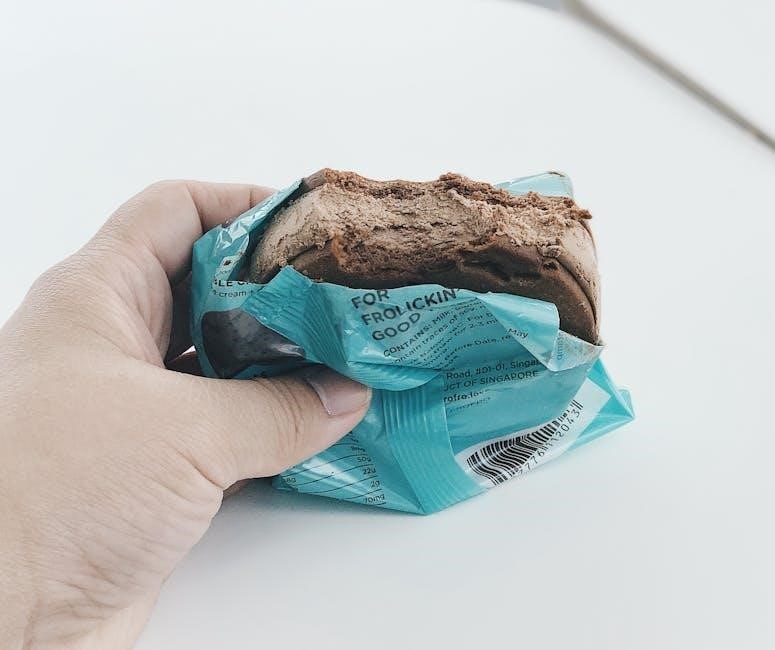
Understanding Your Rival Ice Cream Maker Model
Before you begin, familiarize yourself with your specific Rival Ice Cream Maker model․ This section will guide you in identifying your model and understanding the key components essential for operation and maintenance․
Identifying Your Model Number
Locating your Rival Ice Cream Maker’s model number is crucial for accessing specific information and support․ The model number is typically found on a sticker or plate located on the base of the unit, the motor housing, or sometimes inside the canister compartment․ This number helps you find the correct instruction manual, replacement parts, and troubleshooting guides tailored to your appliance․ Make sure to note this number for future reference when contacting customer support or searching for online resources․ It ensures accurate information retrieval․
Key Components and Their Functions
Understanding the key components of your Rival Ice Cream Maker is essential for proper operation․ The main parts include the motor, which powers the churning process, and the canister, where the ice cream mixture freezes․ The dasher, or paddle, scrapes the sides of the canister to prevent ice crystal formation, ensuring a smooth texture․ The outer bucket holds the ice and salt mixture, providing the necessary freezing temperature․ Each part plays a vital role in creating perfect ice cream, so familiarize yourself with their functions before you begin․
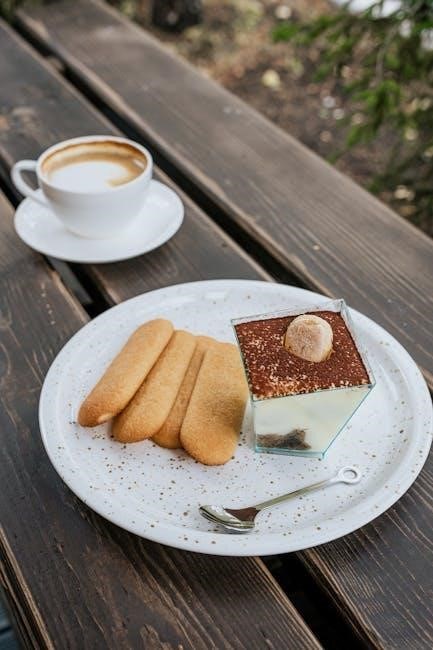
Safety Precautions and Guidelines
Prioritizing safety is crucial when operating any electrical appliance․ This section outlines important safety precautions and guidelines for your Rival Ice Cream Maker, ensuring safe and enjoyable ice cream making experiences every time․ Read carefully before use․
Electrical Safety
To prevent electric shock, never immerse the Rival Ice Cream Maker’s cord, plug, or motor base in water or other liquids․ Always ensure the appliance is unplugged when not in use and before cleaning․ Inspect the power cord regularly for any damage․ If the cord is damaged, it must be replaced by a qualified technician to avoid hazards․ Use only a grounded outlet and avoid using extension cords if possible․ Keep the appliance away from water sources during operation to prevent electrical hazards․
Proper Handling of Components
When handling the components of your Rival Ice Cream Maker, exercise caution to prevent damage or injury․ The freezer bowl should be completely frozen before use; avoid dropping it as this could cause cracks․ The dasher needs to be correctly inserted into the canister to ensure proper churning․ Do not force any parts together; if they don’t fit easily, recheck the alignment․ Ensure all parts are dry before assembling the ice cream maker․ Always supervise children when they are near the ice cream maker․

Step-by-Step Instructions for Ice Cream Making
Ready to make some ice cream? Follow these simple steps! We’ll cover preparing your mixture, assembling the maker, and the churning process․ Soon you’ll be enjoying delicious, homemade ice cream crafted with your Rival Ice Cream Maker․
Preparing the Ice Cream Mixture
The first step to delicious homemade ice cream is preparing your base mixture․ Typically, this involves combining ingredients like cream, milk, sugar, and flavorings․ Whisk these together thoroughly in a bowl until the sugar is completely dissolved․ For best results, chill the mixture in the refrigerator for at least two hours, or even overnight․ This allows the flavors to meld together and ensures a smoother, creamier final product․ Ensure your mixture is cold before adding it to the ice cream maker canister․
Assembling the Ice Cream Maker
Carefully assemble your Rival Ice Cream Maker according to your specific model’s instructions․ Start by placing the chilled canister inside the bucket․ Then, insert the dasher into the canister, ensuring it’s properly seated․ Next, attach the motor unit to the top of the bucket, making sure it securely connects to the dasher․ Before starting the churning process, double-check that all components are correctly aligned and locked into place․ This will prevent any issues during the ice cream making process and ensure optimal performance․
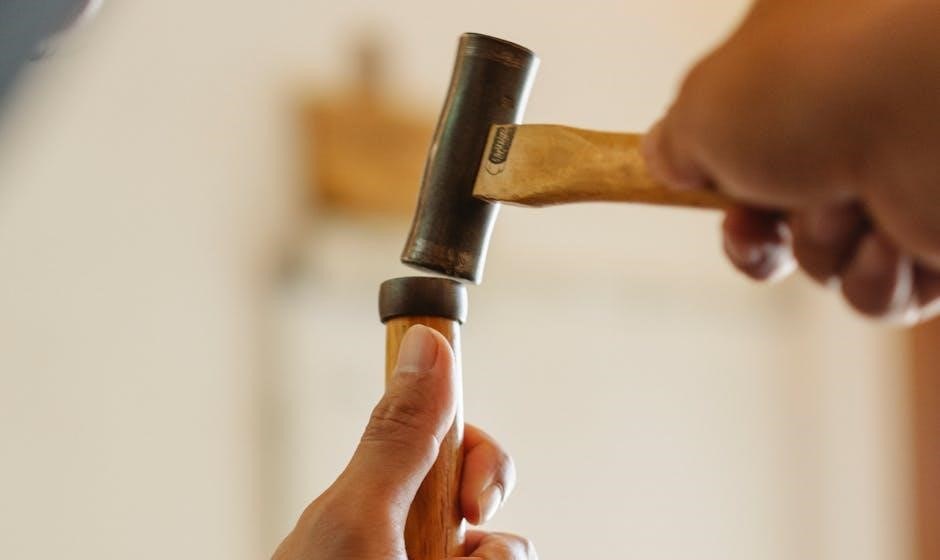
Churning and Freezing Process
Once assembled, begin the churning process! Plug in your Rival Ice Cream Maker and let it run for the recommended time, typically 25 to 40 minutes․ As it churns, the mixture will slowly freeze․ The churning is done when the ice cream reaches a soft-serve consistency․ Monitor the process closely, as over-churning can lead to a grainy texture․ The churning is done when the ice cream reaches a soft-serve consistency․ Once done, unplug the machine and prepare to enjoy your homemade ice cream!
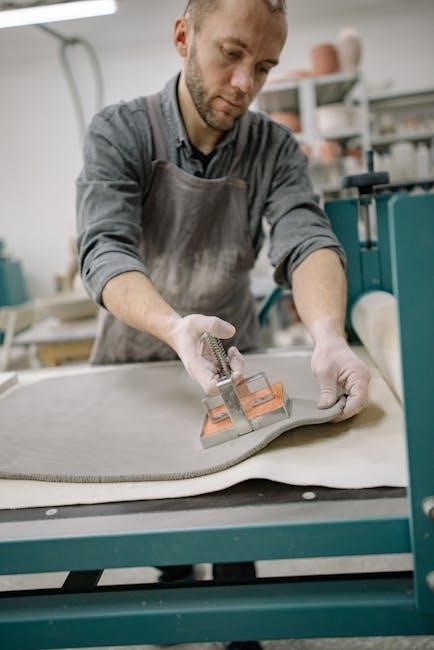
Adding Ingredients and Flavors
Elevate your ice cream! Discover the art of adding ingredients and flavors to your Rival Ice Cream Maker creations․ Explore techniques for mix-ins and flavor variations to create unique and delicious frozen desserts tailored to your taste․
Timing and Techniques for Adding Mix-ins
Master the perfect timing for adding mix-ins to your Rival ice cream․ Adding too early leads to sinking; too late, uneven distribution․ Learn to fold in chocolate chips, fruit, or cookie crumbles during the final minutes of churning․ This ensures even distribution and prevents ingredients from becoming too icy․ Experiment with different textures and sizes for optimal results․ Consider pre-chilling some mix-ins for better incorporation and texture․
Flavor Variations and Recipe Ideas
Unleash your creativity with a myriad of flavor variations! From classic vanilla to cookies and cream, the possibilities are endless․ Incorporate fresh fruit purees, chocolate sauces, or nut butters to create unique and delicious treats․ Explore seasonal flavors like pumpkin spice or peppermint․ Refer to included recipes for inspiration, or adapt your own favorite dessert recipes for the ice cream maker․ Experiment with different extracts and spices to create signature flavors․
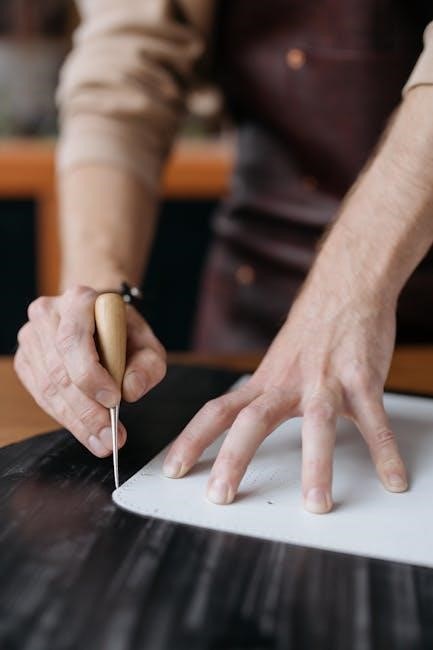
Cleaning and Maintenance
Proper cleaning and maintenance are crucial for the longevity of your Rival Ice Cream Maker․ This section will guide you through disassembling, cleaning, and storing your ice cream maker, ensuring it’s ready for your next frozen creation․
Disassembling the Ice Cream Maker for Cleaning
Before cleaning your Rival Ice Cream Maker, ensure it is unplugged from the power outlet․ Begin by removing the dasher, which is the component that churns the ice cream․ Next, carefully lift out the ice cream canister․ Depending on your model, this might require a slight twist or release of a locking mechanism․ After removing these components, detach any remaining parts, such as the motor housing, following the specific instructions for your model․ Refer to your model’s specific manual for detailed disassembly steps and diagrams․
Proper Cleaning Techniques
After disassembling the ice cream maker, clean each component separately․ Wash the dasher and canister with warm, soapy water․ Avoid using abrasive cleaners or scouring pads, as they can damage the surfaces․ Rinse thoroughly with clean water and ensure all soap residue is removed․ Wipe down the motor housing with a damp cloth; never immerse it in water․ For stubborn ice cream residue, soak the canister in warm water for a few minutes before washing․ Allow all parts to air dry completely before reassembling the ice cream maker․
Storage Recommendations
Proper storage of your Rival Ice Cream Maker components is crucial for maintaining its longevity․ Ensure all parts are completely dry before storing them to prevent mold or mildew growth․ Store the canister, dasher, and motor housing in a cool, dry place, away from direct sunlight and extreme temperatures․ It is best to store the components in their original packaging or a similar protective container to prevent damage․ Avoid stacking heavy items on top of the ice cream maker to prevent deformation or breakage․ Keep the instruction manual with the appliance for easy reference․

Troubleshooting Common Issues
Encountering problems with your Rival Ice Cream Maker? This section addresses common issues such as ice cream not freezing and motor malfunctions․ Find solutions to keep your ice cream making process smooth and enjoyable․
Ice Cream Not Freezing Properly
Is your Rival Ice Cream Maker failing to freeze your mixture adequately? Several factors could be at play․ First, ensure your freezer bowl is thoroughly pre-frozen for the recommended time, typically 16-24 hours․ A partially frozen bowl will significantly hinder the freezing process; Check the consistency of your ice cream mixture; it should be cold but not already frozen before churning․ An overly warm mixture can struggle to freeze properly․ Overfilling the canister can also prevent adequate freezing․ Lastly, verify the ambient temperature isn’t too high, as this affects the freezer bowl’s performance․
Motor Malfunctions
Experiencing issues with your Rival Ice Cream Maker’s motor? A malfunctioning motor can halt your ice cream-making process․ First, ensure the unit is properly plugged into a functioning outlet․ Check the power cord for any visible damage․ Overloading the ice cream maker with too much mixture can strain the motor, causing it to stop․ If the motor is overheating, allow it to cool down completely before attempting to use it again․ If the motor continues to fail, consider inspecting the motor brushes for wear or damage․ Replacement parts might be necessary․

Finding Replacement Parts and Accessories
Need a new dasher or canister? Find authorized retailers and online sources for Rival Ice Cream Maker replacement parts․ Ensure compatibility with your specific model number to keep your machine running smoothly․
Authorized Retailers and Online Sources
Locating replacement parts for your Rival Ice Cream Maker can be straightforward․ Check major online retailers like Amazon and eBay, searching for your specific model number to ensure compatibility․ Additionally, explore the websites of appliance parts suppliers, many of which carry components for older models․ Sears PartsDirect is another potential source․ Always verify the part number against your ice cream maker’s manual before purchasing․ Consider contacting Rival directly, if possible, although support for discontinued models may be limited․ Remember to compare prices and shipping costs from various vendors to secure the best deal․

Frequently Asked Questions (FAQs)
Q: How long does it typically take to make ice cream? A: Expect around 25 to 40 minutes, depending on your mixture and the ambient temperature․ Q: Can I add ingredients during churning? A: Yes, add mix-ins during the last few minutes for even distribution․ Q: What if my ice cream isn’t freezing? A: Ensure the canister is pre-frozen and the mixture is adequately chilled․ Q: Where can I find replacement parts? A: Check online retailers, appliance parts suppliers, and Sears PartsDirect․ Q: Can I use any ice cream recipe? A: Yes, but adjust quantities to match your maker’s capacity․